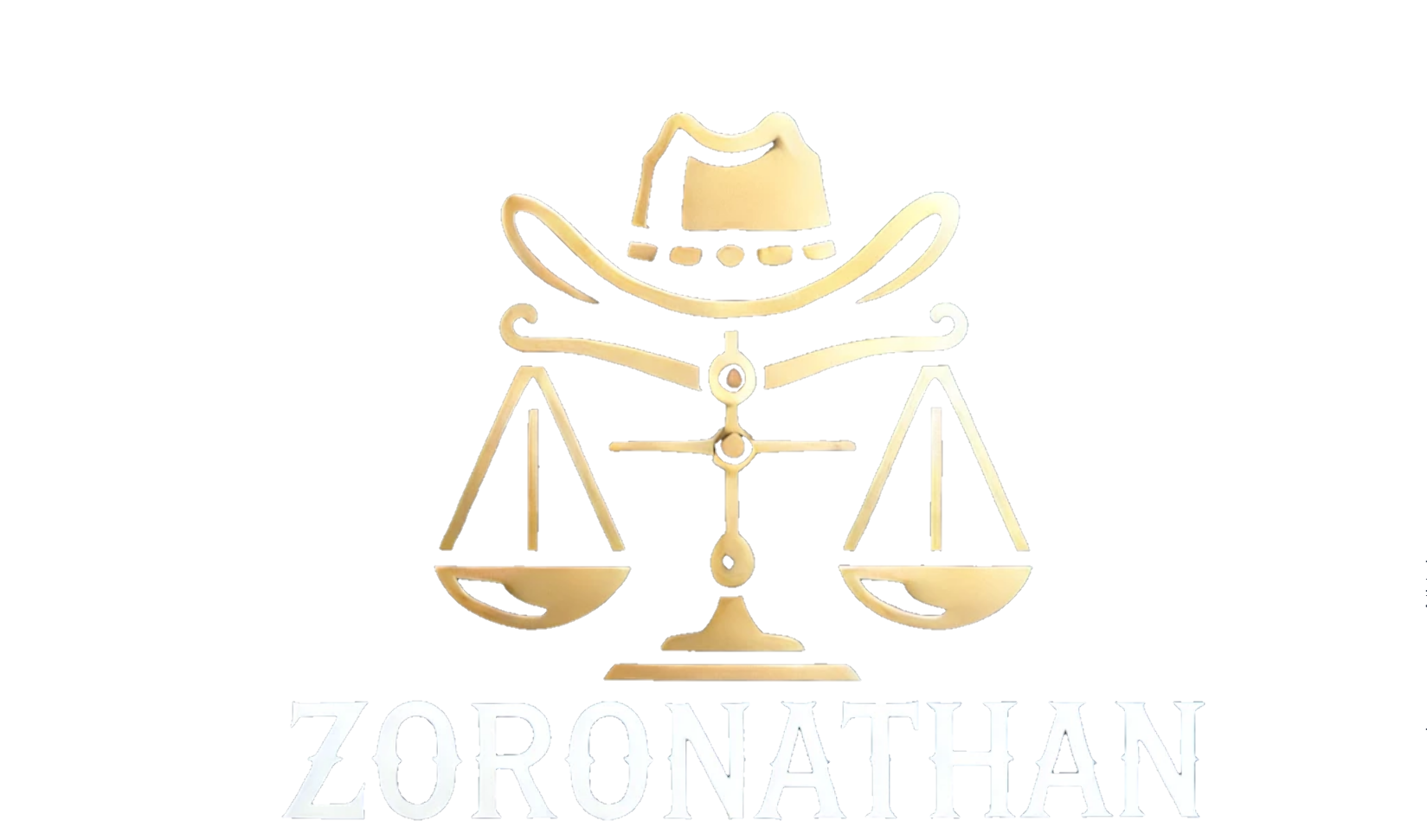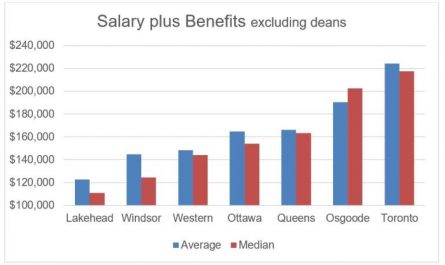The intersection of bankruptcy and family law presents unique challenges, demanding a nuanced understanding of both legal domains. Financial distress impacting a family can significantly complicate divorce proceedings, child custody arrangements, and the division of assets. This often requires the specialized expertise of an attorney proficient in both bankruptcy and family law, someone who can navigate the intricacies of these overlapping legal landscapes to protect your rights and interests.
This guide explores the key considerations when facing both bankruptcy and family law issues simultaneously. We will delve into how bankruptcy filings affect marital asset division, child support obligations, and the preservation of family assets. We’ll also examine the ethical considerations for attorneys handling such intertwined cases and the importance of seeking skilled legal representation.
Impact of Bankruptcy on Family Law Matters
Bankruptcy can significantly complicate family law matters, particularly divorce proceedings. The impact depends heavily on the type of bankruptcy filed (Chapter 7 or Chapter 13) and the specific assets and debts involved. Understanding these interactions is crucial for both parties involved in a divorce to protect their interests.
Chapter 7 Bankruptcy’s Effect on Marital Assets During Divorce
In a Chapter 7 bankruptcy, the debtor’s non-exempt assets are liquidated to pay off creditors. This liquidation process can significantly affect the division of marital assets in a divorce. Assets that would normally be subject to equitable distribution in a divorce may instead be sold to satisfy creditors’ claims. For example, a jointly owned home may be sold, with the proceeds distributed according to the bankruptcy court’s orders, potentially leaving little for the divorcing parties to split. The timing of the bankruptcy filing relative to the divorce proceedings is crucial; if the bankruptcy is filed before the divorce is finalized, the bankruptcy trustee will have claim to marital assets, potentially altering the divorce settlement.
Including Debts in a Divorce Settlement After Bankruptcy Filing
Including debts in a divorce settlement after a bankruptcy filing requires careful consideration. Debts discharged in bankruptcy are generally not considered marital debts subject to division. However, debts that are not discharged, such as certain student loans or alimony obligations, remain the responsibility of the debtor and are still considered in the divorce settlement. The court will determine how these debts are allocated between the parties, considering factors like earning capacity and the parties’ contributions to the debt. It’s important to note that a bankruptcy discharge doesn’t erase the debt completely; it merely alters how the debt is handled.
Bankruptcy’s Impact on Child Support and Alimony Obligations
Bankruptcy generally does not discharge child support or alimony obligations. These are considered priority debts and are not subject to discharge under most circumstances. However, a significant change in income due to job loss or other financial hardship related to the bankruptcy may lead to a modification of the support order. This modification would need to be requested through the family court, presenting evidence of the changed financial circumstances resulting from the bankruptcy. The court will then assess the debtor’s ability to pay and may adjust the support payments accordingly. It’s vital to remember that avoiding or neglecting child support or alimony obligations even after bankruptcy can lead to serious legal consequences.
Comparison of Asset Treatment in Chapter 7 vs. Chapter 13 Bankruptcy within Family Law
| Asset Type | Chapter 7 Treatment | Chapter 13 Treatment | Impact on Divorce |
|---|---|---|---|
| Non-exempt Assets (e.g., second car, certain investments) | Liquidated to pay creditors | Retained by debtor; payments made to creditors through a repayment plan | May significantly reduce assets available for division in divorce; Chapter 13 provides more control over asset distribution. |
| Exempt Assets (e.g., primary residence up to a certain value, retirement accounts) | Protected from creditors | Protected from creditors | Subject to equitable distribution in divorce, regardless of bankruptcy filing. |
| Marital Debts (e.g., credit card debt, medical bills) | Potentially discharged, depending on circumstances | Repaid through a repayment plan | Discharge may alter the division of debt in divorce; Chapter 13 provides a structured repayment plan. |
| Child Support/Alimony | Not dischargeable | Not dischargeable | Remains a responsibility of the debtor, regardless of bankruptcy; potential for modification based on income changes. |
Protecting Assets During Bankruptcy Proceedings
Navigating bankruptcy can be incredibly stressful, particularly when family assets are involved. Understanding how to protect your home and other valuable possessions is crucial for minimizing the impact of bankruptcy on your family’s future. This section Artikels strategies to safeguard your assets during this challenging process.
Preserving Family Homes During Bankruptcy
Protecting your family home during bankruptcy often hinges on utilizing bankruptcy exemptions and exploring options like reaffirmation agreements or loan modifications. Exemptions allow you to keep certain assets, including your primary residence, up to a specific value, free from creditor claims. The specific exemption amounts vary by state. For example, in some states, you might be able to protect a significant portion of your home’s equity, while in others, the exemption might be lower or more restrictive. Reaffirmation agreements involve agreeing to continue making mortgage payments even after filing for bankruptcy, essentially keeping the house while reaffirming your debt obligation. However, this should be carefully considered, as it continues the debt obligation. Loan modification, which involves negotiating new terms with your lender (such as a lower interest rate or extended repayment period), may also be an option to improve your ability to make mortgage payments and retain your home.
The Role of Exemptions in Protecting Assets from Bankruptcy Creditors
Bankruptcy exemptions are legally protected assets that creditors cannot seize to satisfy debts. These exemptions vary widely by state and are designed to provide a minimum standard of living for debtors. Common exempt assets often include a certain amount of equity in your primary residence, a vehicle, personal belongings, and retirement accounts. Understanding your state’s specific exemptions is paramount. For instance, a debtor in Texas might have a higher homestead exemption than a debtor in California, allowing them to protect more equity in their home. Careful planning and legal counsel are essential to maximize the use of these exemptions. Failure to properly claim exemptions could lead to the loss of valuable assets.
Implications of Joint Ownership of Assets During a Bankruptcy Filing
When assets are jointly owned, bankruptcy proceedings can become more complex. The bankruptcy filing of one spouse can impact the assets owned jointly with their spouse. Creditors may have claims against the jointly owned property, even if only one spouse filed for bankruptcy. Depending on state laws and the type of property, the non-filing spouse might need to contribute to the repayment of debts, or they might face the loss of their share of the asset. Pre-bankruptcy planning that addresses joint ownership, such as creating separate accounts or transferring ownership, can mitigate these risks, but it is crucial to seek legal advice to ensure compliance with bankruptcy laws. It’s important to understand that these actions can have tax implications and should be carefully considered with the advice of a tax professional.
Steps to Protect Assets Before Filing for Bankruptcy
Taking proactive steps before filing for bankruptcy can significantly improve the outcome. Careful planning is essential to maximize asset protection.
- Consult with a bankruptcy attorney: A lawyer can help you understand your rights and options, and guide you through the complexities of bankruptcy law.
- Review your state’s exemption laws: Familiarize yourself with the assets you can protect under your state’s bankruptcy exemptions.
- Organize your financial documents: Gather all relevant financial records, including bank statements, tax returns, and loan documents.
- Consider asset protection strategies: Explore options like trusts or other legal structures that may offer additional asset protection.
- Avoid incurring new debt: Refrain from taking on new debt in the period leading up to filing for bankruptcy.
Bankruptcy and Child Custody Disputes
Bankruptcy proceedings can significantly intersect with family law matters, particularly those involving child custody and support. The financial instability often leading to bankruptcy can create complications in already complex family situations, impacting a parent’s ability to fulfill their parental responsibilities and potentially influencing custody decisions. Understanding the interplay between these legal areas is crucial for individuals navigating both processes simultaneously.
The financial strain associated with bankruptcy can directly affect a parent’s ability to meet their child support obligations. This is because bankruptcy alters a debtor’s financial landscape, potentially reducing their disposable income. The court’s approach to child support modifications within the context of bankruptcy is nuanced and requires careful consideration of individual circumstances.
Impact of Bankruptcy on Child Support Obligations
A parent filing for bankruptcy may seek to modify their child support obligations. However, child support is typically considered a priority debt, meaning it’s not dischargeable in bankruptcy. This means that even after filing for bankruptcy, the parent remains legally obligated to pay child support. The bankruptcy court may, however, adjust the payment schedule based on the debtor’s post-bankruptcy income and expenses. For example, a parent who experiences a significant reduction in income due to job loss might request a modification to their child support payments. The court will assess the parent’s new financial situation to determine a fair and reasonable payment plan, considering the best interests of the child. This process requires meticulous documentation of income, expenses, and assets. Failure to comply with modified or unmodified child support orders can lead to further legal consequences, such as wage garnishment or contempt of court.
Bankruptcy’s Influence on Child Custody and Visitation Decisions
While bankruptcy itself doesn’t directly impact custody decisions, the financial instability underlying the bankruptcy filing can indirectly influence a judge’s assessment of a parent’s fitness. For example, a parent’s inability to provide a stable home environment due to financial hardship could be considered by the court. This doesn’t automatically mean a change in custody, but it becomes a factor in the court’s overall evaluation of the best interests of the child. Judges will consider the totality of the circumstances, including the child’s needs, each parent’s ability to provide for those needs, and the overall stability of each household. Evidence of financial instability may be presented by either party during custody proceedings, but it is rarely the sole determinant of custody or visitation arrangements. The court’s focus remains on the child’s well-being and creating a safe and nurturing environment. A parent’s bankruptcy filing is merely one piece of information considered within a broader context.
Legal Representation in Bankruptcy and Family Law Cases
Navigating the complexities of bankruptcy and family law simultaneously can be incredibly challenging. The intertwined nature of financial matters and family disputes necessitates expert legal counsel capable of addressing both areas effectively. A skilled attorney specializing in both fields can provide crucial guidance and representation, ensuring your rights are protected and the best possible outcome is achieved.
Finding a Qualified Attorney
Locating an attorney proficient in both bankruptcy and family law requires a strategic approach. Begin by searching online directories of attorneys, focusing on those with specific experience in both practice areas. Check state bar association websites for attorney profiles and disciplinary records. Request referrals from trusted sources, such as financial advisors or other attorneys. Finally, schedule consultations with several prospective attorneys to discuss their experience, approach, and fees. Thoroughly review their qualifications, ensuring they possess the necessary expertise and a proven track record of success in handling similar cases. Consider factors such as their communication style and overall comfort level.
Services Offered by a Bankruptcy and Family Law Attorney
Attorneys specializing in both bankruptcy and family law offer a comprehensive range of services designed to protect clients’ interests across multiple legal fronts. These services typically include: filing for bankruptcy protection (Chapter 7 or Chapter 13), negotiating with creditors, representing clients in divorce proceedings, crafting prenuptial or postnuptial agreements, addressing child custody and support issues, and protecting assets during bankruptcy proceedings while considering their impact on family law matters. They can also provide guidance on the legal implications of bankruptcy on spousal support, child support, and property division. Furthermore, they can assist in developing strategies to minimize the impact of bankruptcy on family relationships and future financial stability.
Importance of Legal Representation
Legal representation is paramount when facing both bankruptcy and family law issues concurrently. The legal landscape is intricate, with numerous rules, regulations, and procedures that can be easily misunderstood. An attorney provides expert guidance, ensuring that all legal requirements are met and that your rights are protected throughout the process. They can navigate the complexities of both legal areas simultaneously, ensuring a coordinated approach to achieve the best possible outcome. Without legal representation, individuals risk making costly mistakes that could negatively impact their financial and family well-being. For instance, improperly filing for bankruptcy could lead to asset forfeiture or an unsuccessful discharge, while mishandling family law proceedings could result in unfair settlements or lost custody rights. The expertise of an attorney significantly increases the likelihood of a favorable resolution in both areas.
Legal Process Flowchart
A flowchart depicting the process would visually represent the interconnected nature of bankruptcy and family law proceedings. It would begin with the initial consultation, followed by the gathering of financial and family-related documents. Then, the attorney would advise on the most suitable course of action, potentially including bankruptcy filing and simultaneous family law proceedings. The flowchart would then show parallel processes: bankruptcy proceedings (credit counseling, meeting of creditors, discharge) and family law proceedings (negotiation, mediation, litigation). Finally, the flowchart would culminate in the resolution of both the bankruptcy and family law matters, potentially involving a discharge in bankruptcy and a finalized family law order. The flowchart would visually demonstrate how the attorney coordinates these parallel tracks, ensuring that decisions in one area don’t negatively impact the other.
Financial Disclosure in Bankruptcy and Family Law
Financial disclosure is a cornerstone of both bankruptcy and family law proceedings. Accurate and complete financial information is crucial for the court to make fair and informed decisions regarding debt relief in bankruptcy and asset division in family law matters. Failure to fully disclose assets can have serious consequences in both legal arenas.
Requirements for Financial Disclosure in Bankruptcy Proceedings
Bankruptcy requires debtors to provide a comprehensive picture of their financial situation. This typically involves filing schedules detailing assets, liabilities, income, and expenses. The level of detail required varies depending on the chapter of bankruptcy filed (Chapter 7, 11, or 13), but generally includes a statement of financial affairs, schedules of assets and liabilities, a schedule of current income and expenses, and a statement of your current monthly income. Debtors must disclose all assets, regardless of whether they are considered exempt from creditor claims. Omissions or inaccuracies can lead to the dismissal of the bankruptcy case, or even criminal charges for fraud. The accuracy of the information provided is verified through various means, including examination under oath.
Differences in Financial Disclosure Requirements Between Bankruptcy and Divorce Cases
While both bankruptcy and divorce proceedings necessitate financial disclosure, the scope and purpose differ. In bankruptcy, the focus is on determining the debtor’s ability to repay debts and identifying assets available for distribution to creditors. Divorce proceedings, conversely, center on equitably dividing marital assets and liabilities between the divorcing parties. Bankruptcy disclosures tend to be more focused on the debtor’s current financial situation, while divorce disclosures often require a more extensive review of the parties’ financial history, including pre-marital assets and income. For example, a family home might be considered an asset in both, but its valuation and treatment will differ. In bankruptcy, its value will be assessed to determine if it is exempt or available for liquidation. In a divorce, its value and ownership will be considered for equitable distribution.
Impact of Discrepancies in Financial Disclosures
Discrepancies in financial disclosures can have severe repercussions in both bankruptcy and family law cases. In bankruptcy, undisclosed assets can lead to the dismissal of the case, resulting in continued creditor harassment and potential legal action for fraud. The trustee may pursue recovery of the hidden assets, and the debtor may face additional penalties. In divorce proceedings, failure to fully disclose assets can lead to an unfair division of property. The non-disclosing spouse may be ordered to pay additional support or be subject to sanctions. For instance, if a spouse hides a significant bank account, the court may order them to pay a larger share of the marital debt or award a greater portion of assets to the other spouse. A hidden business interest could result in a significant financial disadvantage to the unaware spouse. In both contexts, the discovery of undisclosed assets can lead to significant legal battles and financial penalties for the offending party. The consequences can be far-reaching and severely impact the outcome of the case.
Ethical Considerations for Attorneys Handling Both Cases
Attorneys handling both bankruptcy and family law cases face a unique set of ethical challenges due to the intertwined nature of financial and familial matters. The potential for conflicts of interest is significant, requiring careful navigation and adherence to strict ethical guidelines to ensure client well-being and uphold professional integrity. Transparency and open communication are paramount in maintaining trust and avoiding legal pitfalls.
Navigating these complexities requires a deep understanding of applicable rules of professional conduct and a commitment to prioritizing client interests above all else. Failing to do so can lead to disciplinary action and severe legal repercussions for the attorney and significant harm to the client.
Potential Conflicts of Interest
A key ethical concern is the potential for conflicts of interest. For example, a client seeking bankruptcy protection might attempt to hide assets to maximize debt discharge, which could conflict with their obligations in a simultaneous family law case involving asset division. Similarly, a client’s bankruptcy filing might impact their ability to meet child support obligations, creating a conflict between their financial and parental responsibilities. Another example involves the attorney’s own financial interest in the outcome of a case, even indirectly, creating a potential for biased counsel. These conflicts demand careful assessment and proactive mitigation strategies.
Strategies for Conflict Mitigation
To mitigate potential conflicts, attorneys should implement several strategies. First, a thorough conflict check is essential before accepting representation in both cases. This involves a detailed review of the client’s financial situation and family dynamics to identify any potential conflicts. Second, written informed consent from the client is crucial, ensuring they understand the potential conflicts and the attorney’s strategies for managing them. This consent should be obtained after full disclosure of all relevant information and potential consequences. Third, if conflicts cannot be effectively mitigated, the attorney must withdraw from one or both cases, prioritizing client well-being. This might involve referring the client to another qualified attorney. Finally, maintaining meticulous records of all communications, actions, and decisions related to both cases is essential for demonstrating compliance with ethical standards.
Importance of Transparency and Full Disclosure
Transparency and full disclosure are foundational to ethical representation in both bankruptcy and family law. Clients must be fully informed about all aspects of their cases, including the potential conflicts of interest, the attorney’s strategies for addressing them, and the potential impact of one case on the other. This requires clear, concise communication, tailored to the client’s understanding, and avoiding legal jargon. The attorney should proactively address any questions or concerns the client might have, fostering open dialogue and ensuring informed consent at every stage of the process. Failure to maintain complete transparency can lead to ethical violations and damage the attorney-client relationship irreparably. This includes promptly disclosing any changes in circumstances that could impact the representation, such as changes in financial status or new developments in either case.
Final Conclusion
Successfully navigating the complex interplay between bankruptcy and family law requires careful planning, strategic decision-making, and skilled legal counsel. Understanding the impact of bankruptcy on your family law matters is crucial for protecting your assets, ensuring the well-being of your family, and achieving a fair and equitable outcome. By seeking the advice of an experienced bankruptcy and family law attorney, you can gain clarity, build a strong legal strategy, and effectively manage the financial and legal complexities inherent in these situations. Remember, proactive planning and informed legal guidance are essential in safeguarding your future.
FAQ Explained
Can I file for bankruptcy during a divorce?
Yes, you can file for bankruptcy during a divorce. However, it’s crucial to coordinate both processes carefully, as they significantly impact each other.
How does bankruptcy affect my alimony payments?
Bankruptcy may discharge certain types of alimony debts, depending on the specific circumstances and the type of alimony order. Consult an attorney for clarification.
What happens to my retirement accounts in bankruptcy?
Retirement accounts are often protected by exemptions, but the specifics depend on state and federal laws and the type of bankruptcy filed. An attorney can help determine what exemptions apply to your situation.
Will bankruptcy affect my child custody arrangements?
Directly, no. However, a parent’s financial instability due to bankruptcy might indirectly affect custody arrangements if it impacts their ability to provide for the child.




